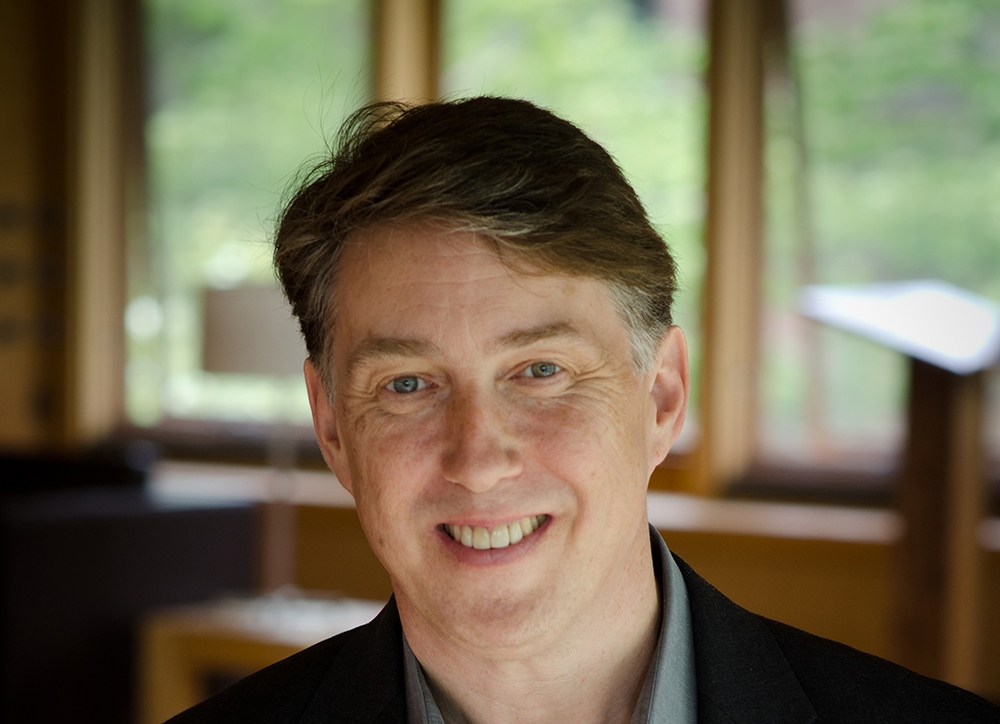By Emma Crow-Willard
Paul T. Anastas is a Professor of Chemistry and Chemical Engineering at Yale University in the United States and the director for the Center for Green Chemistry and Green Engineering at Yale. In 1980 he founded the field of Green Chemistry while working in the US EPA. I joined him in his office at the Yale University to discuss the past and future of green chemistry.
Q: How did you get interested in Chemistry?
I grew up on a beautiful little hill just south of Boston, overlooking some of the most gorgeous wetlands you could ever imagine. When I was eight years old these were replaced by very large glass buildings, banks, and insurance companies. I was tremendously distraught, and wanted to do something. My father was a high school biology teacher, and he said something to me that I’ll never forget: if you really care about something, if you love something, then you’ll care enough to learn about it. And so, that was really the beginning. I knew I needed to understand how the world worked because I cared about the world, and my pathway into science was through the environment.
As a freshman at college, I carried out a synthesis in a research laboratory that resulted in these gorgeous crystals precipitating out of a solution. I knew, for the first time, that I had made something, a particular combination of atoms, that had never been made before, and that the universe had never seen.
That was so empowering and exhilarating. That was what made me fall in love with chemistry. So I really love the combination of not just understanding the world as it is, but being able to create and design and introduce new things into the world.
Q: Why do you think people are so excited about green chemistry today?
Our entire society and economy is based on the materials we transform into the products of modern life, and we’ve been figuring out how to do that for a couple hundred years.
The good news is that we have done an astounding job of putting molecules to work for us that produce particular functions. We can produce everything from new medicines, to new ways of raising food, communication, and transportation, all these different things.
The bad news is that because we used a reductionist framework of how we approach problem solving, at the same time that we solved important problems, we created other unintended consequences.
We created problems related to human health and the environment: degradation of ecosystems, depletion of resources, degrading health of children and wildlife; the problems that we all know. And we’ve been doing that for a long time.
Luckily Rachel Carson brought our attention to these facts. And so, the reason that everybody is paying attention to green chemistry now is because we’ve been able to figure out how to getting away from the absurdity of all of these unintended consequences, and designing things to not only function and perform well, but do so in a way that keeps our health, and the environment, ecosystems thriving – and are profitable.
Q: Green chemistry was started 25 years ago. Would you consider it a “mature field”?
Oh no! I think that calling something a “mature field” is one of the worst insults that one can give. Maturity is the stage right before death! No, I consider it very much a nascent and emerging field. The first phase of green chemistry was doing a very good job at identifying the worst elements of chemistry and finding ways to do them differently, to increase efficiency, to eliminate toxic solvents. And that is great. But that’s not anywhere near the power and potential of green chemistry.
The power and the potential of green chemistry is in developing the new science, the new chemistry, the new products, the new molecules, the new transformations, that are not only going to eliminate toxic solvents and improve efficiency, but genuinely provide function and performance we’ve never seen before. Green can be defined as “young, fresh, and new,” and I think one of the goals of green chemistry is to try to be ever-green.
Q: You are considered the “Father of Green Chemistry”. How do you feel about that title?
Honestly, I’ve been very fortunate to be part of a global community of people pursuing and advancing green chemistry. Whether they’re academics, in industry, NGOs, or government, the greatest honor of mine is being considered a part of that community.
I was lucky when I was a very young scientist in the Environmental Protection Agency to have two brilliant mentors, Dr. Roger Garrett and Dr. Joe Breen. I went to the EPA when I was 27 years old, and launched the green chemistry program when I was 29, in 1991. I give them all the gratitude in the world for allowing me and encouraging me in developing the first programs in this field. Roger Garrett first introduced me to Joe Breen by saying “Joe, meet the father of green chemistry”, and Joe probably introduced me at hundreds of events and conferences using that title in the years that followed. That’s why the title actually means a tremendous amount to me.
We lost them both to cancer extremely young. And I honestly believe that without their support and their vision, none of what I was trying to build would have been possible. So if there’s a reason that I embrace that moniker it’s only because of where it came from, and that’s Joe Breen and Roger Garrett.
Q: What is the biggest success of green chemistry?
Causing people to think differently. Back in 1991 there were some things that were just, the way you thought about things. There’s this great Mark Twain quote “It’s not the things that you don’t know that get you into trouble, it’s the things that you know for sure, that just ain’t so.” One of the things that we knew for sure back in 1991 was that if we want the products of modern society, we have to use toxic chemicals. We knew for sure that environment was going to simply be a cost drain, it was never going to be a money maker.
And if you look over the past 25 years, each of these things have been shown that they “just ain’t so”. By design, you can make things non-toxic, make them degradable. We can use less energy by design. Not at the end of pipe, but we can avoid waste rather than ever create it. Everything doesn’t have to be made from petroleum but can be made from renewable feed stocks. Businesses are choosing green chemistry as a strategy because it helps them meet their environmental performance while making good business sense and making more money. So the biggest accomplishment of green chemistry is changing the way people think to know what’s possible, to actually make sustainability into a practical reality rather than just a slogan.
Q: So it still has a lot of room to grow, given how many chemicals we do still use that are very dangerous, but you feel like there has been a big impact ever since the start of green chemistry, and even since Silent Spring?
Oh, absolutely. Who knows, I think that maybe 1% of green chemistry’s ultimate power and potential have been touched. So it’s like we are at the power of computing in the 1940s perhaps, we are at the very beginning as far as I can see.
Q. What is the biggest failure of green chemistry?
On the one hand, you have all of this new science filling up scientific journals, but yet, the vast majority of the public doesn’t have any idea what green chemistry is. They don’t know what they can demand, they don’t know what they can ask for, they don’t know that green chemistry is possible.
The biggest failure of green chemistry is that we have missed the power of story. We have not translated this critical advance into something that’s real for everyday people. This needs to be one of the priorities going forward.
Q: Which sector of industry benefits most from green chemistry?
I think that there are sectors that have really taken some leadership. Really complex chemistries that have historically generated a lot of waste as a percentage of their products really stepped up. Pharmaceuticals historically produced a lot of waste for every pound of product. They recognised that, and have taken amazing advances in green chemistry.
See personal care products, cosmetic companies, recognising that their products are going to be slathered over everybody’s bodies, and in some cases like shampoos and soaps, their time in the use phase can be a matter of seconds before they’re sent down the drain and introduced into the environment. That sector has taken it very seriously, and there’s some great green chemistry going on there as well.
There are some sectors where it hasn’t been as integrated, and I would say that there hasn’t been any sector, any company, that has systematically incorporated green chemistry into all aspects of its business, so there’s plenty of room for improvement.
Q: How do you envision the future of green chemistry?
There should be no student that graduates from any chemistry degree that doesn’t know the fundamentals about how to make the products of their trade and use the tools of their trade so that it doesn’t cause adverse consequences.
Additionally, I think what we really see is people understanding that green chemistry is not just a set of 12 isolated Principles but rather a cohesive system and needs to be looked at in a systematic way. We have to get away from making unsustainable products and processes a little bit more efficiently or a little bit less wasteful and instead cross over into genuinely good, helpful, non-depleting performance, products. By looking systematically we get genuine innovation, top-line growth, with new products, and new processes.
That’s a big part of where green chemistry has to go, and is going. Green chemistry being recognised as not just an isolated field, but actually a fusion, not working with, but a fusion with other fields, with toxicology, with engineering, with synthetic biology. Ideally, the future of green chemistry is that the term “green chemistry” goes away, because it’s simply the way we do chemistry.














